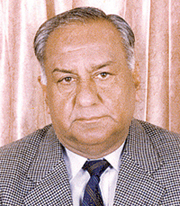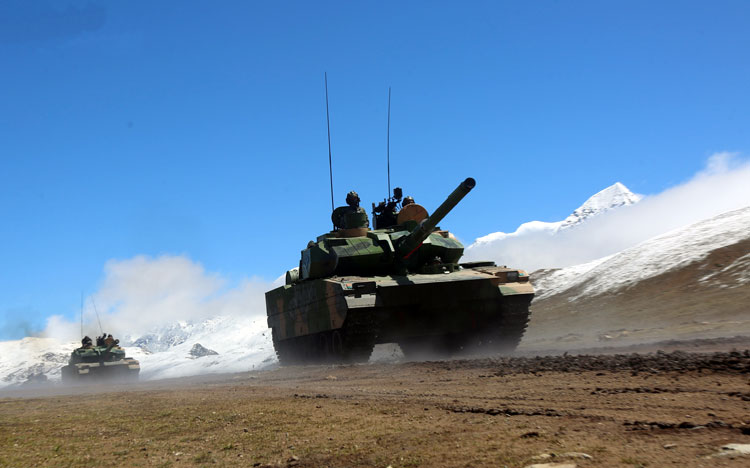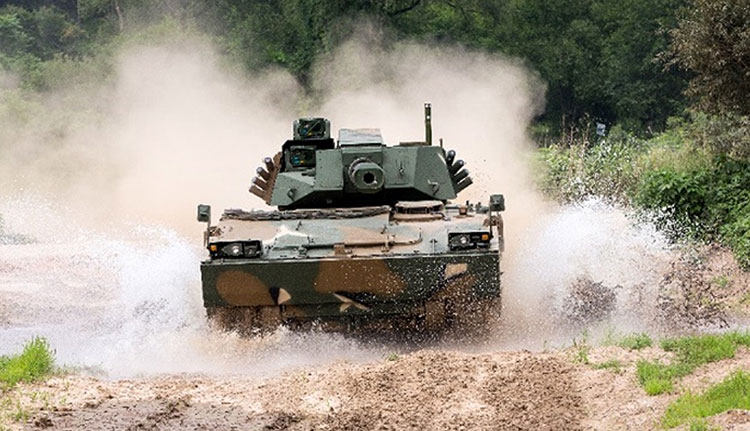INDIAN ARMED FORCES CHIEFS ON OUR RELENTLESS AND FOCUSED PUBLISHING EFFORTS

The insightful articles, inspiring narrations and analytical perspectives presented by the Editorial Team, establish an alluring connect with the reader. My compliments and best wishes to SP Guide Publications.

"Over the past 60 years, the growth of SP Guide Publications has mirrored the rising stature of Indian Navy. Its well-researched and informative magazines on Defence and Aerospace sector have served to shape an educated opinion of our military personnel, policy makers and the public alike. I wish SP's Publication team continued success, fair winds and following seas in all future endeavour!"

Since, its inception in 1964, SP Guide Publications has consistently demonstrated commitment to high-quality journalism in the aerospace and defence sectors, earning a well-deserved reputation as Asia's largest media house in this domain. I wish SP Guide Publications continued success in its pursuit of excellence.
- Operation Sindoor: Resolute yet Restrained
- India’s Operation Sindoor Sends a Clear Message to Terror and the World – ‘ZERO TOLERANCE’
- Japan and India set forth a defence cooperation consultancy framework, talks on tank and jet engines
- Terrorist Attack in Pahalgam in Kashmir: Unfolding a long surgical war against PAK
- Lt General Pratik Sharma takes over Command of Indian Army's Northern Command
Army needs Light Tanks
The main gun of the Light Tanks should have advance multipurpose ‘Smart Munitions’ and be able to fire tube launched anti-tank guided missile with the capability to defeat tanks and soft skinned vehicles.
 |
The Author is former Director General, Army Air Defence and was a member of Integrated Guided Missile Development Programme. |
Background
During the recent stand off in Ladakh, Chinese troops had deployed their light tank ZTQ-15. This is not the first time tanks were deployed in Ladakh. During 1962 war with China, troops of 20 Lancers with their AMX-13 tank was deployed in the Spangur Gap in Chushul. AMX-13 is a light tank of French origin and weighs 13 tonnes. Since they were airlifted at short notice, they were really not prepared to operate effectively in the high altitude region. After the operations they were recovered and a Squadron of 20 Lancers was located at Karu. The Squadron was later withdrawn and deployed during the 1965 Indo-Pak War in Operation Grand Slam in the Chhamb-Jaurian area and also in the Battle of Asal Uttar. They gave a very good account of themselves against Patton tanks and won the day for India. Later on T-72 tanks of Russian origin were deployed in Karu but they were probably too heavy to move around were thus withdrawn. In an AN-12 transport aircraft T-72 had to be carried in two sorties-one for the turret and one for the hull. It was reported that in August 2020, the Indian Army deployed T-72 and T-90 Main Battle Tanks on the South bank of Pangong Tso.

ZTQ-15. The Chinese light tank ZTQ-15, is a third generation light tank which is a successor to the Type 62 light tank. Its normal weight is 33 tonnes and 36 tonnes with armour package. It uses a new fully-stabilised 105 mm rifled gun, has a range of 3 km and capable of firing Armour Piercing Fin Stabilised Discarding Sabot (APFSDS), High Explosive Anti-tank (HEAT) and HE rounds; and gun-launched Anti Tank Guided Missile (ATGM). Generally APFSDS and HEAT rounds are used against enemy armour while HE round is used against enemy infantry positions, light/non armoured vehicles, buildings, field fortification. The range of the missile is reported to be 5 km and can even engage low-flying helicopters.
RFI
The Indian Ministry of Defence’s Request for Information (RFI) issued on April 22, 2021, states that it plans to procure, “approximately 350 Light Tanks based on new generation combat vehicle platform in a phased manner, along with performance-based logistics, niche technologies, engineering support package, and other maintenance and training requirements.” The RFI has been issued in the backdrop of the recent border standoff with China where the forces felt the need for light tanks that could be deployed in higher-altitude areas (HAA) of Ladakh where the PLA fielded its ZTQ-15 light tank. A similar RFI was issued in 2009 but was not processed.

Salient features of RFI
The tank should be based on a new generation of combat vehicle platforms of modular construction so that it can be tailor made for the role envisaged. Its armament should include separate weapons for ground and air defence role. The main gun should have advance multipurpose ‘Smart Munitions’ and be able to fire tube launched anti-tank guided missile with the capability to defeat tanks and soft skinned vehicles. The system should have Remote Control Weapon Station and should be able to defeat tanks, soft skinned vehicles and UAVs. It should have Automotive and Gun Control System and any other system/ sub-system which enhances the operational and employability of the platform; should have High Detection Recognition and Identification Ranges with thermal night fighting capability. For Electronic Warfare, the tank must have offensive and defensive electronic countermeasures (ECM) and counter-countermeasures (ECCM). It should have anti-drone capability, power backup and environmental control for operating in extreme cold conditions - similar to the one Russian tanks have including in Schilka. It should also be net enabled. The Light Tank is planned to be procured under the ‘Make-in-India’ ethos and spirit of the Defence Acquisition Procedure (DAP) 2020 which implies transfer technology if they are imported and will be produced in India. It further amplifies, “The Government of India, Ministry of Defence, is desirous of acquiring Comprehensive Technologies including detailed design manufacturing know-how of the Light Tank platform being offered.” “The Indian Development Agency will retain the ownership of the design and technologies for the platform to ensure achievement of ‘Atmanirbhar Bharat’. RFI is to be responded by June 18, 2021.
Hanwha Defense has a developed a version of its successful K-21 Infantry fighting Vehicle, the K21-105, which mounts a 105mm tank gun turret on the K-21 tracked chassis and weighs about 25tonnes.
South Korea’s Hanwha Defence’s K21-105
It is reported that the Republic of Korea’s Hanwha Defense is ready to response to the RFI for light tanks. Hanwha Defense has a developed a version of its successful K-21 Infantry fighting Vehicle, the K21-105, which mounts a 105mm tank gun turret on the K-21 tracked chassis and weighs about 25 tonnes. This was also offered for the US Army Mobile Protected Firepower vehicle requirement in a collaboration with the US firm Science Applications International Corporation.The design incorporated a CMI Defense 105mm stabilised gun turret with automatic loading providing 8 rounds per minute firing rate. Equipped with advanced day/thermal sights, digital fire controls, and able to incorporate a panoramic sight it can precisely engage targets up to a range of 4 km. The gun uses standard NATO ammunitions as well as the Ukrainian-designed cannon launched laser-guided Falarick 105 ATGM which has a range of 5km. With a crew of three the vehicle offers tank level firepower in a compact, highly mobile configuration well suited for operations in restricted terrain.
DRDO
Defence Research and Development Organisation is working with Larsen & Toubro (L&T) to mount the K9 Vajra on a suitable chassis and convert it into a light tank that could be employed in high altitude region. The K9 Vajra is built by L&T with technology transfer from South Korean defence major Hanwha Defense, and is based on its K9 Thunder. However the 155mm 52calibre self propelled howitzer weighs about 30 tonnes and will its barrel be able to fire an anti tank missile? The gun system has to be mounted on a suitable tank platform which can take the weight and recoil of 155mm howitzer and still remain within the weight restrictions. It is the Indian Army’s call!





